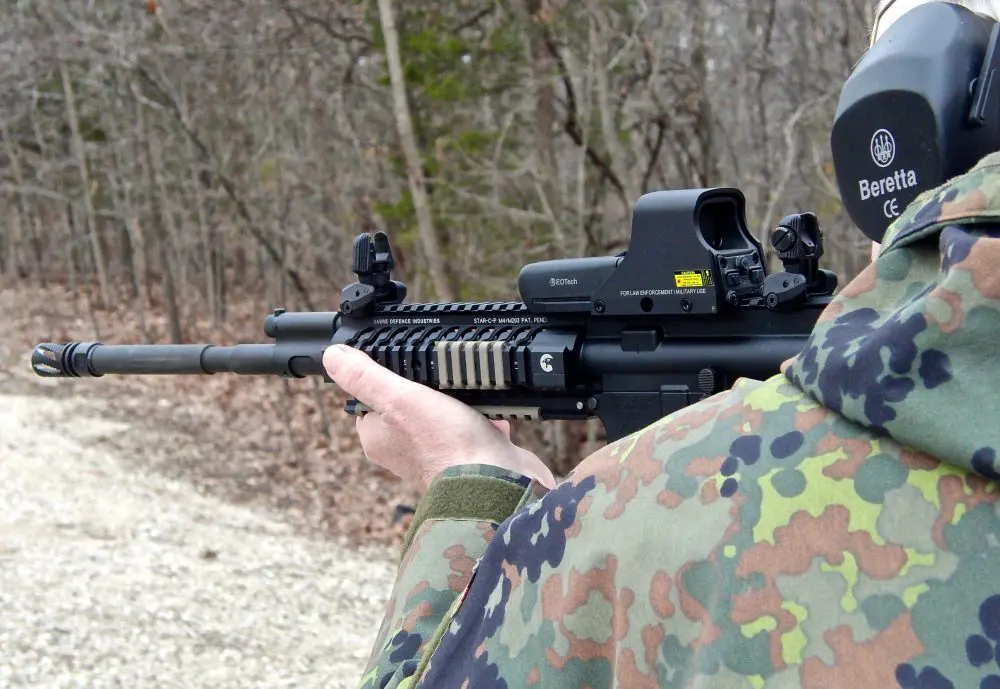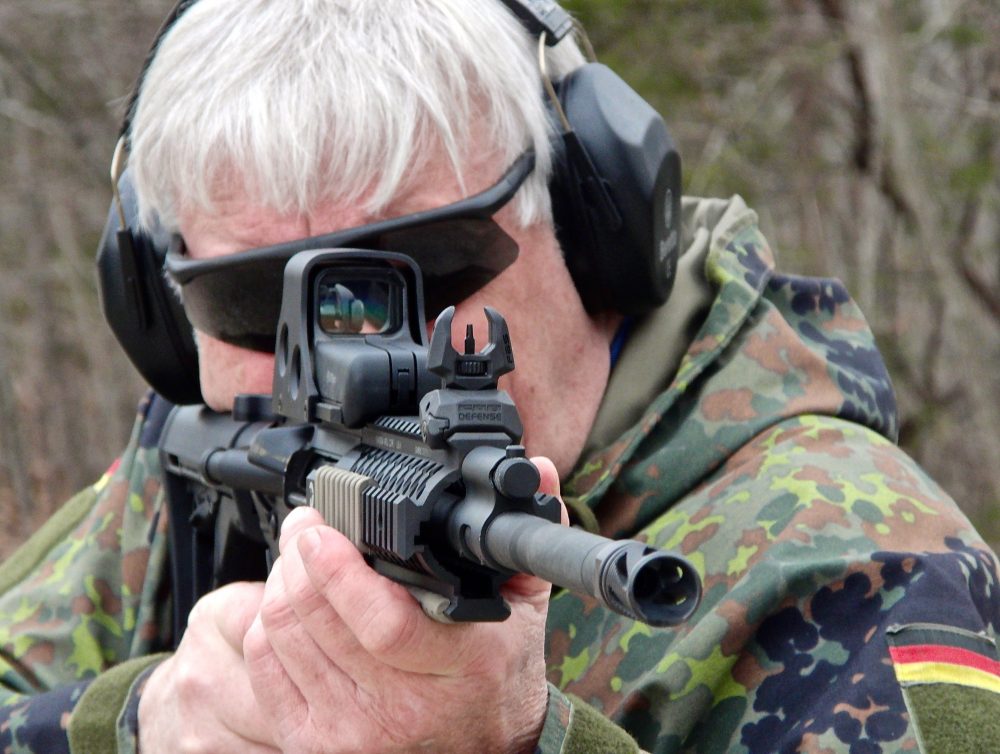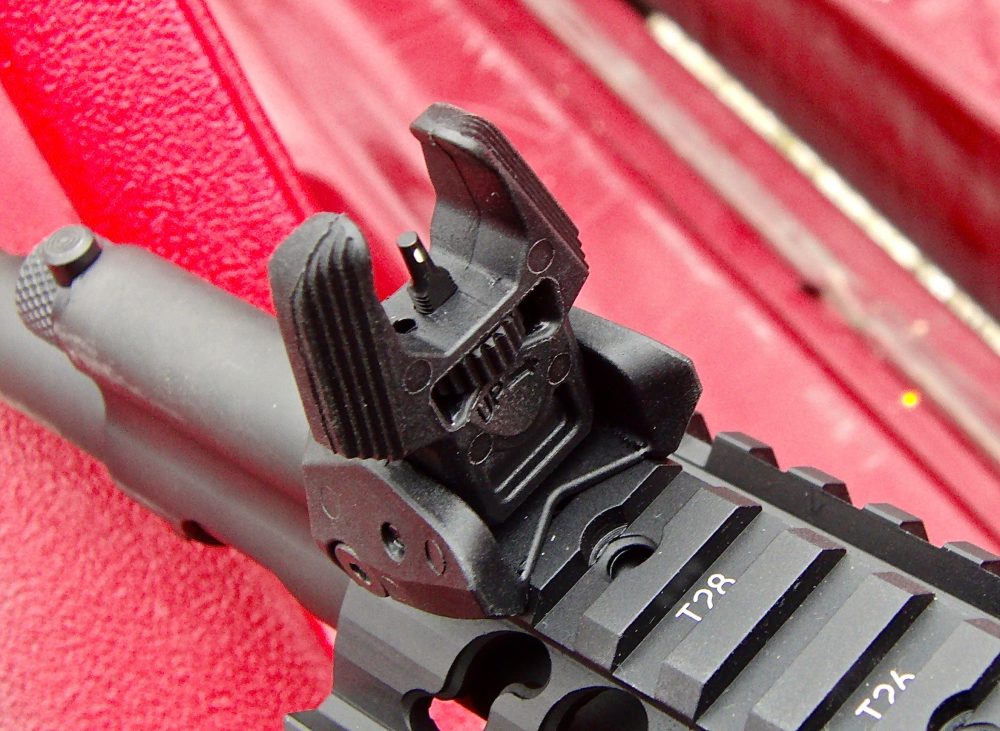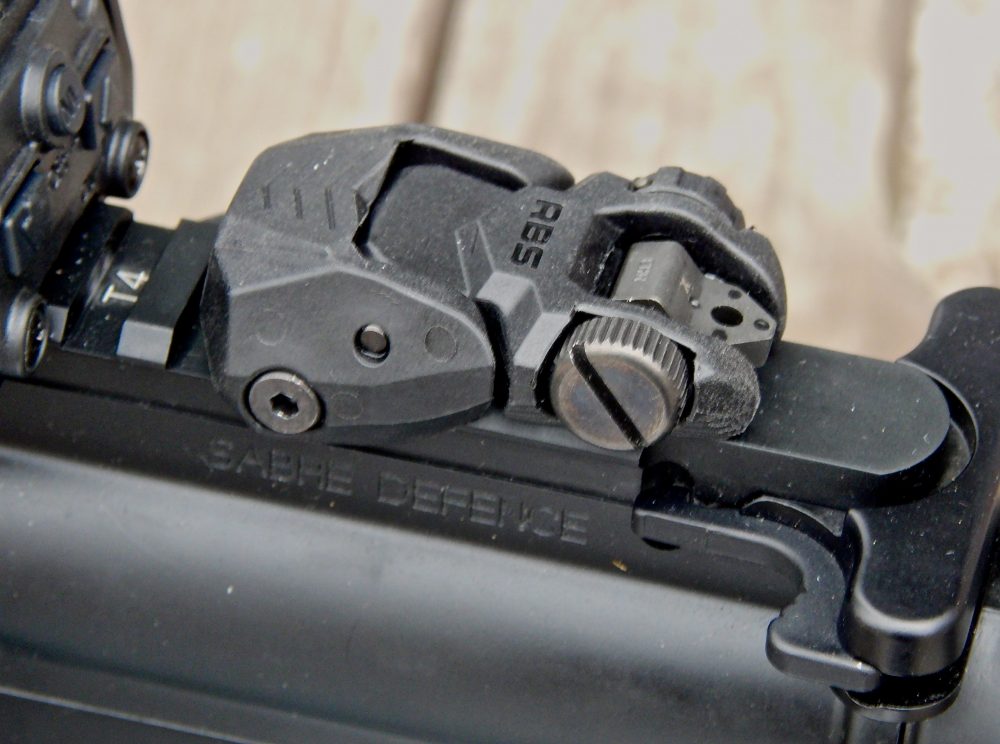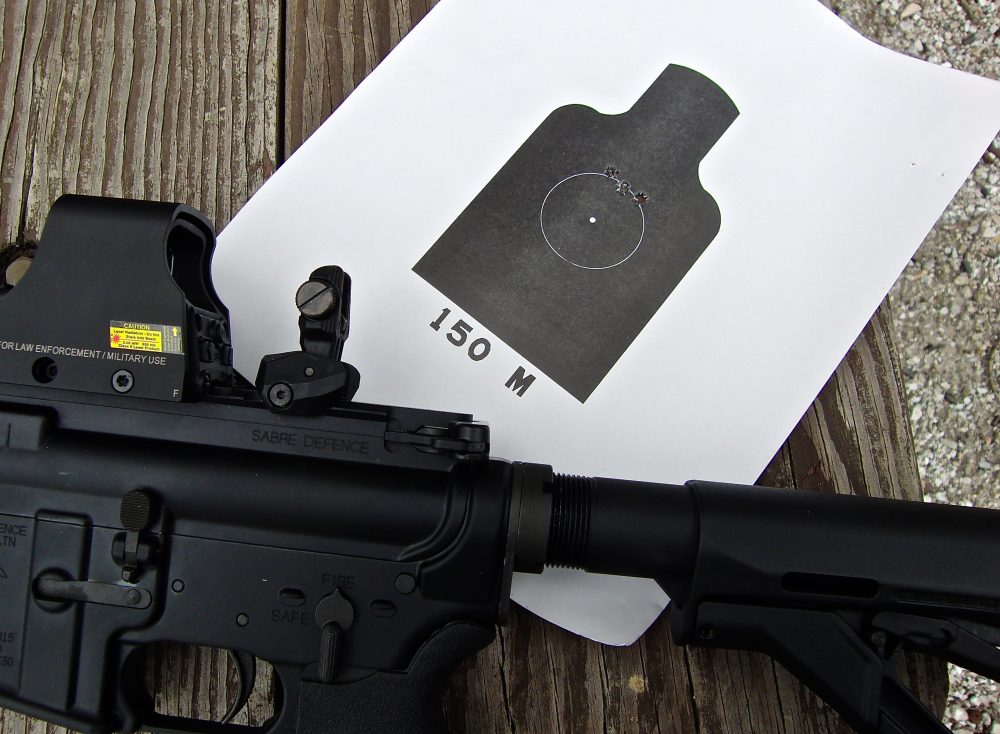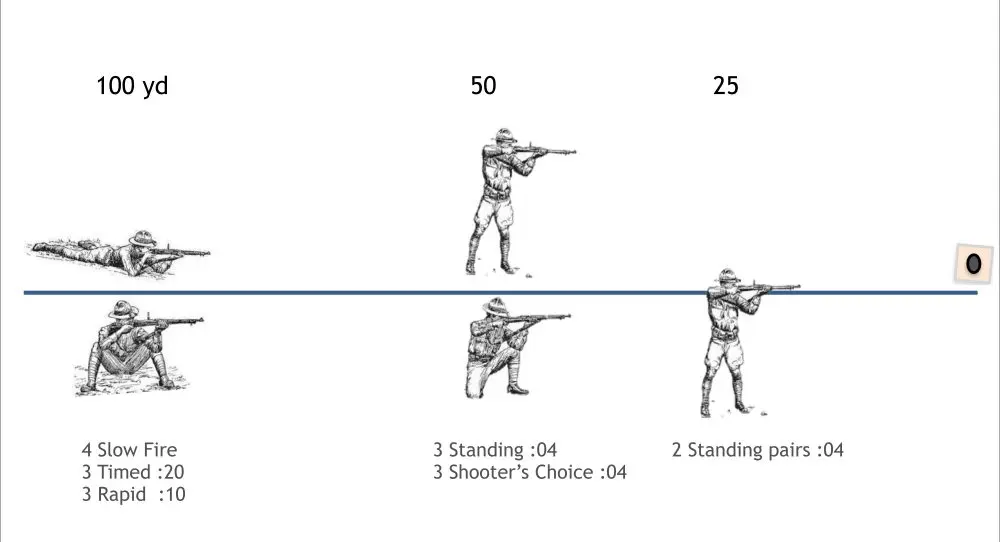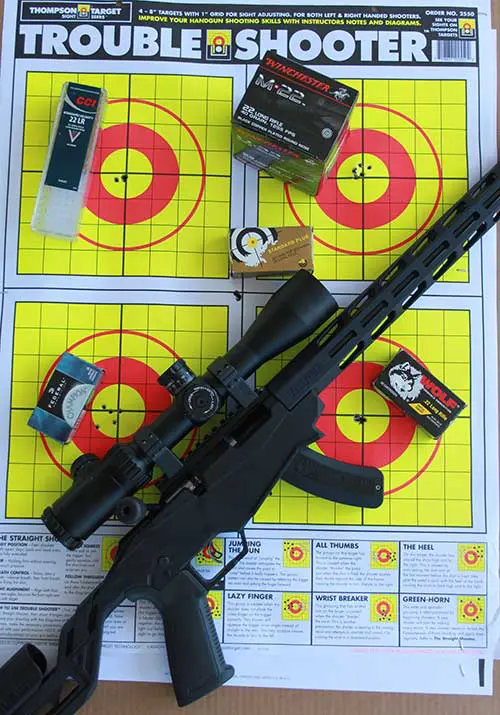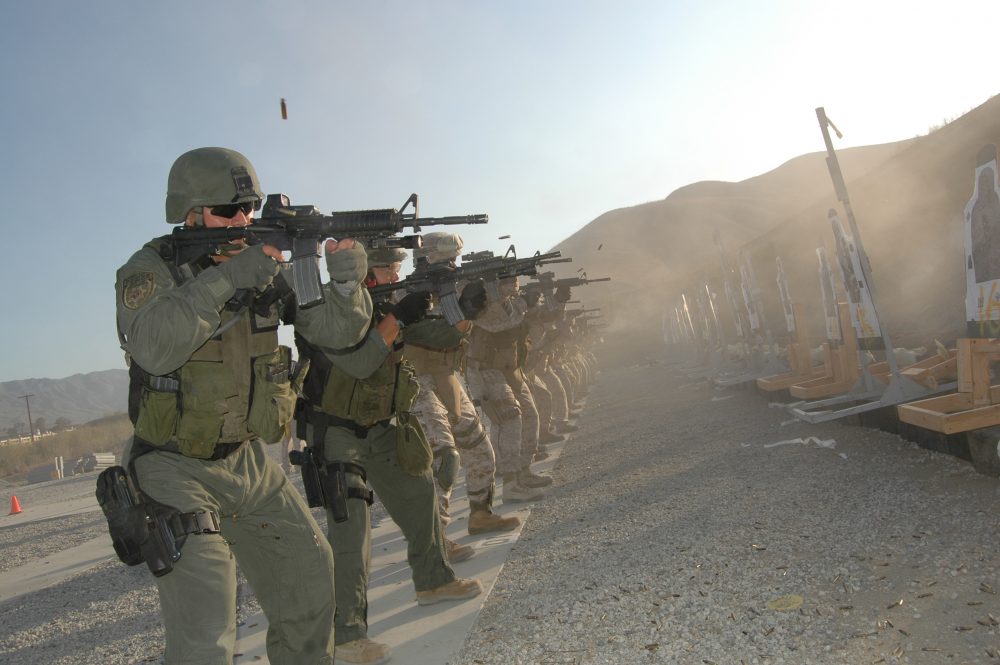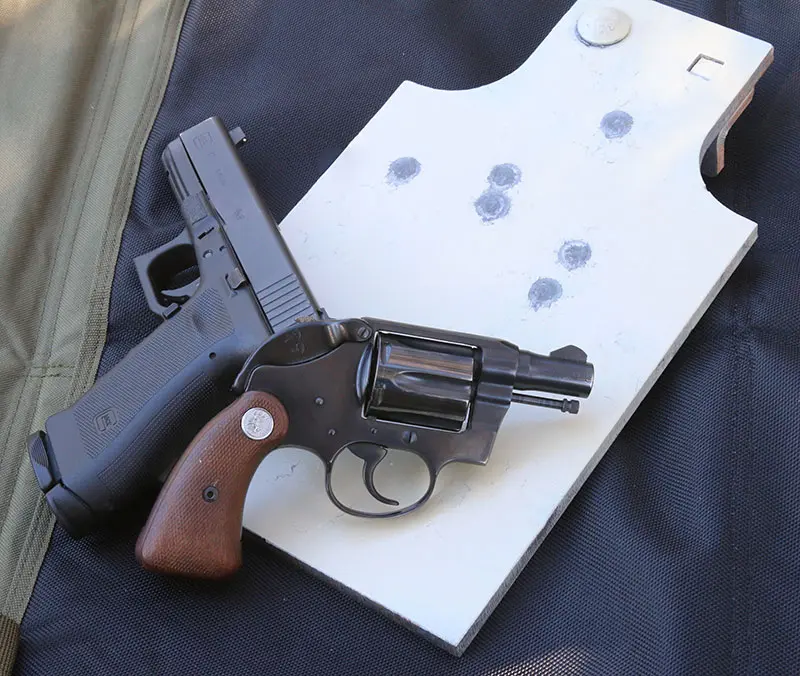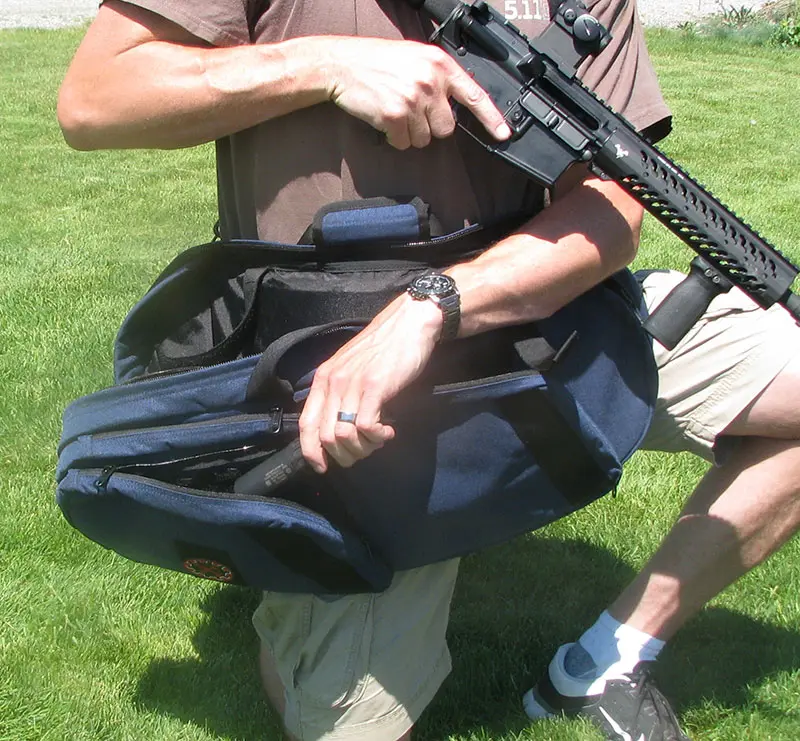Shooting M4 with both FRBS sights flipped up.
Most likely almost everyone reading this who uses a battery-powered optical sight has had the battery die at some point while shooting a rifle or carbine. I say “almost” because I know a few of you are assiduous enough that you change your batteries at regular intervals to avoid this problem. I’m semi-assiduous, as I try to change my batteries at regular intervals but sometimes forget.

In any case, if you use optical sights on your M4 or other combat carbine, I highly recommend that a set of BUIS (Back-Up Iron Sights) be installed. I use Trijicon, ELCAN, EOTech, and Aimpoint optical sights because I test a lot of carbines and like to stay familiar with the optical sights I’m likely to encounter.
The Trijicon ACOG does not use batteries and is very durable, so it is normally not necessary to go to BUIS, but I still install them. On ELCAN sights such as the Specter DR, batteries are required but a small BUIS is incorporated atop the optic for emergency use. It works at close range but is not as precise as good BUIS at longer distances.
I consider BUIS especially important with EOTech and Aimpoint optical sights. Both require batteries, though the Aimpoint is designed for long battery life. Both also lend themselves well to use of the BUIS, since folding sights may be installed that allow use through the optical sight if its red dot or holograph dies.
Actually, I have found with the Aimpoint that if I install my BUIS correctly, I can shoot more accurately at longer distances when the red dot is on by centering it in the BUIS.
OK, so as the Hulk would say, “BUIS good!”
Given that premise, I want to discuss the Meprolight FRBS, which adds night sights to very well-designed Back-Up Iron Sights.
As it happened, when my set came in to test, I had just re-installed an EOTech on my Sabre Defence M4 and was trying to decide what type of BUIS I wanted to use with it. As soon as I examined the FRBS, I decided it was going to be my choice, assuming it performed to expectations.
Front FRBS sight flipped up and showing tritium insert. Dial permits easy adjustment for elevation.
Among the features I find appealing about the Meprolight FRBS are that the front sight is adjustable for elevation by turning a dial with the fingers, and the rear sight is adjustable for windage also using a dial. There is no need for the familiar front sight tool or screwdriver that can get lost.
The front sight has a tritium insert, while the rear sight incorporates either two or four tritium dots. The rear sight offers two peeps, with the smaller one allowing quite precise shot placement. The sights fold rearward, so they can be quickly deployed from either side of the carbine using the thumb to flip them up.
The FRBS installed quickly and easily on a MIL-STD 1913 (Picatinny) rail. Some care must be taken in installing the rear sight that room is left so it can be flipped up without hitting the optical sight, but since eye relief with the EOTech is fairly long, this was a no brainer.
Rear FRBS sight folded, with larger aperture showing.
Installation of the front sight would normally be as far forward on the rail as practical. Once the sights were installed and tightened down, I tried flipping each one up half a dozen times and found that they were quick to deploy and locked in position solidly. Pressing them back down folds them and there is no release lever to be pushed to raise them. Just apply upward and forward pressure with the thumb or finger.
As I normally do for BUIS, I zeroed the FRBS at 25 meters, as this will be close to on at 200 meters and relatively close in between. I would not normally expect to use BUIS past 100 meters.
Twenty-five meter three-shot group. Target is designed to simulate size of a standard humanoid target at 150 meters.
I like the option of using the wider aperture or the peep aperture on the FRBS. With the peep aperture, I could actually shoot more precisely than with the holograph of the EOTech. My vision is such that I do not see the holographic reticle really sharply. I see it fine for quick reaction shooting on a man target, but not well enough for precise shooting.
I found that the finger-operated dials made adjustments for windage and elevation easy. For some reason it took a lot of rounds to get elevation really dialed in, but once it was, I could shoot very well with the FRBS. Using some targets a friend has made for 25-meter shooting but that duplicate the sight picture at 150 meters and employing the peep sight, I shot good three-shot groups with the FRBS.
Proper mounting of two sights with the EOTech.
Overall, I am quite impressed with the FRBS. It is a very usable BUIS for daylight but is especially useful at night. There are two options for the rear sight—one with two tritium dots and one with four. The tritium inserts are only on the larger aperture. The one I tested had four and let me acquire the front sight quite well.
The best summation of why I like the FRBS so much is that it does everything a standard daylight BUIS does with the added advantage of night-fighting capability.
Suggested retail price for the version with four dots is $194.76, and the two-dot version is $178.05.
SOURCE
THE MAKO GROUP
(631) 843 0490
www.themakogroup.com
